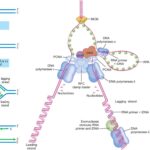IB Biology 18 Views 1 Answers
Sourav PanLv 9November 9, 2024
What are the structure-function relationships of phloem sieve tubes?
What are the structure-function relationships of phloem sieve tubes?
Please login to save the post
Please login to submit an answer.
Sourav PanLv 9May 15, 2025
The structure-function relationships of phloem sieve tubes are essential for their role in transporting organic compounds throughout the plant. Here’s an overview of how specific structural features of sieve tube elements and companion cells relate to their functions:
Structure-Function Relationships of Phloem Sieve Tubes
1. Sieve Tube Elements
- Structure:
- Lack of Nucleus and Organelles: Mature sieve tube elements have no nucleus, ribosomes, or vacuoles. This absence maximizes internal space for the flow of phloem sap, allowing for efficient transport of organic compounds.
- Thin Cytoplasm: The cytoplasm is reduced to minimize resistance to the flow of sap, facilitating rapid movement of nutrients.
- Sieve Plates: These are porous end walls between adjacent sieve tube elements that contain numerous small pores (sieve pores). They allow for the continuous flow of sap between connected sieve tubes.
- Function:
- The lack of organelles and thin cytoplasm enable a high rate of transport through the sieve tubes, accommodating the bulk flow of sugars and other nutrients.
- Sieve plates facilitate the connection between sieve tube elements, ensuring that the flow of sap is unimpeded and can move efficiently from source to sink.
2. Companion Cells
- Structure:
- Presence of Nucleus and Organelles: Companion cells contain a nucleus and numerous organelles, including mitochondria, which provide ATP for active transport processes.
- Plasmodesmata Connections: Companion cells are connected to sieve tube elements via plasmodesmata, which are small channels that allow for the exchange of materials between the two cell types.
- Function:
- The nucleus and organelles in companion cells support the metabolic needs of the adjacent sieve tube elements, which cannot sustain independent metabolic activity due to their lack of organelles.
- Companion cells actively load sucrose into the phloem through active transport mechanisms, helping to maintain high solute concentrations in the sieve tubes. This process is crucial for generating osmotic pressure that drives water uptake from xylem and facilitates sap flow.
3. Overall Phloem Structure
- Presence of Parenchyma and Sclerenchyma Cells:
- Parenchyma cells provide storage and support, while sclerenchyma fibers offer structural integrity to the phloem tissue.
- Functionality:
- These additional cell types contribute to the overall strength and functionality of phloem tissue, allowing it to withstand hydrostatic pressures generated during sap transport.
0
0 likes
- Share on Facebook
- Share on Twitter
- Share on LinkedIn
0 found this helpful out of 0 votes
Helpful: 0%
Helpful: 0%
Was this page helpful?




